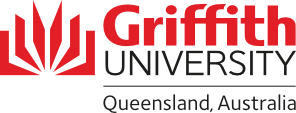Please note that this is an on-going project.
Project Description
The overall aim of the activities, “What’s on My Plate for Morning Tea,” “Reptile awareness Program”, “Healthy Lunch Box Week,” “Bucket Filling,” “8 Ways of Aboriginal Knowing,” and “Celebrating Cultural Days in Kindergarten,” was to introduce kindergarten children to the 17 Sustainable Development Goals (SDGs) by nurturing five essential attributes/characters that relate to them. These activities were designed to align with educational principles and best practices, promoting active learning, participation, and critical engagement with global challenges.
The core framework of these activities revolved around five fundamental attributes that serve as powerful tools to help young children grasp and internalize the significance of the 17 SDGs. These attributes provided a structured foundation for engagement and comprehension:
Curiosity: These activities encouraged curiosity among children, motivating them to explore the SDGs, ask questions, and seek answers. Curiosity fostered a deeper understanding of each goal by sparking the children’s natural desire to learn and discover.
Empathy: The programs focused on developing empathy in children, helping them understand the challenges faced by individuals and communities globally. This emotional connection motivated them to act, instilling a sense of compassion and responsibility towards addressing global issues.
Critical Thinking: Critical thinking skills were cultivated, enabling children to analyse complex issues related to the SDGs. They learned to evaluate various perspectives and develop well-informed opinions, empowering them to engage thoughtfully with global challenges. Collaboration: Collaboration was promoted, emphasizing the value of teamwork and cooperation. Children were empowered to work collectively towards the SDGs, fostering innovative thinking and encouraging them to find creative solutions to global problems.
Action: Action was a key component, inspiring children to take tangible steps in their lives.
Project Personnel and Beneficiaries
The key people involved in these activities are educators, parents, and the kindergarten children themselves. Educators play a central role in designing and implementing the activities, creating a conducive learning environment that fosters the five essential attributes (curiosity, empathy, critical thinking, collaboration, and action). They facilitate the exploration of concepts related to the 17 Sustainable Development Goals (SDGs) and guide children’s understanding of global challenges. Parents are actively engaged in these activities, extending the learning experience beyond the classroom and into the home environment, reinforcing the values and knowledge gained. Community members, including local organizations and cultural groups, often contribute by sharing their expertise and resources during activities like celebrating cultural days. The project/activity primarily benefits young children in kindergarten and early education settings.
Outcomes to Date
The initiatives have successfully equipped children with a foundational understanding of the 17 SDGs. Children have demonstrated an increased awareness of global challenges, including poverty, environmental conservation, and gender equality. They have grasped the interconnectedness of these issues and have shown curiosity and empathy toward addressing them.
The activities have inspired children to take tangible steps in their everyday lives to contribute to the SDGs. Whether through creating art projects, making sustainable food choices, or engaging in cultural celebrations, children have begun to translate their knowledge into action. This includes making more sustainable food choices, in empathy-driven activities, and advocating for sustainability within their families and communities.
Project Significance
These activities were important for several reasons. Firstly, they serve as a foundational educational platform for young children to become aware of and engage with the 17 Sustainable Development Goals (SDGs). These goals represent a global agenda to address pressing issues such as poverty, inequality, climate change, and environmental conservation. By introducing children to the SDGs at an early age, we are sowing the seeds of awareness and responsibility, laying the groundwork for a future generation that is attuned to the world’s most critical challenges.
Furthermore, these activities were crucial in fostering five essential attributes—curiosity, empathy, critical thinking, collaboration, and action—among children. These attributes are not only fundamental for individual development but also instrumental in achieving the SDGs and advancing sustainable development globally.
By nurturing curiosity, empathy, critical thinking, collaboration, and action, we are not only preparing children to be responsible global citizens but also fostering a sense of agency, ensuring that they play a pivotal role in shaping a more sustainable and equitable future for all.
Related Link
External link to https://worldslargestlesson.globalgoals.org

